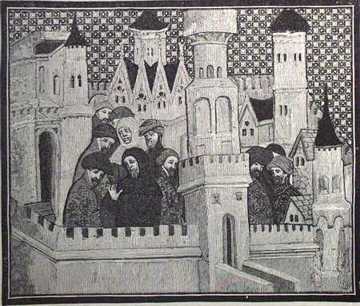The dynastic jigsaw
The dynastic quarrel in the Wars of the Roses had its roots in Henry IV's 1399 usurpation of the throne from Richard II, the grandson of Edward III. Since Richard died without issue and had no brothers, the hereditary right to the throne should have passed to the descendant of Edward III's next eldest son (Lionel of Clarence, from whom the Mortimers were descended).
But Henry's usurpation bypassed Edmund Mortimer* (Richard's heir presumptive), and founded the royal House of Lancaster--an offshoot of Edward III's fourth son, John of Gaunt, Duke of Lancaster.
John of Gaunt's numerous offspring also included the children of his mistress Catherine Swynford, giving rise to a second branch of the House of Lancaster--the Beauforts (who held the duchy of Somerset).
Finally, a fourth royal line descended from Edward III's fifth son, Edmund of Langley. These were the dukes of York, the wealthiest members of the 15th-century nobility. The Mortimers' bypassed claim to the throne enabled the Yorkist kings and Henry VII to declare the Lancastrian dynasty illegitimate. (For Shakespeare's version of the Yorkist claim to the throne, see Henry VI, Part Two, 2.2.34-49.)
The quarrel was ended by Henry Tudor (Henry VII), whose claim to the throne was more tenuous than any since William the Conqueror.
Footnotes
-
A tangled web
The eight-year-old Edmund Mortimer, 5th Earl of March, became the heir presumptive on the death of his father, Roger, who had been declared the heir apparent by Richard before he was deposed (see Henry IV, Part One, 1. 3. 143). Shakespeare combines this Edmund with his uncle of the same name, who married the daughter of Glendower, and whose sister married Hotspur. Clear?
